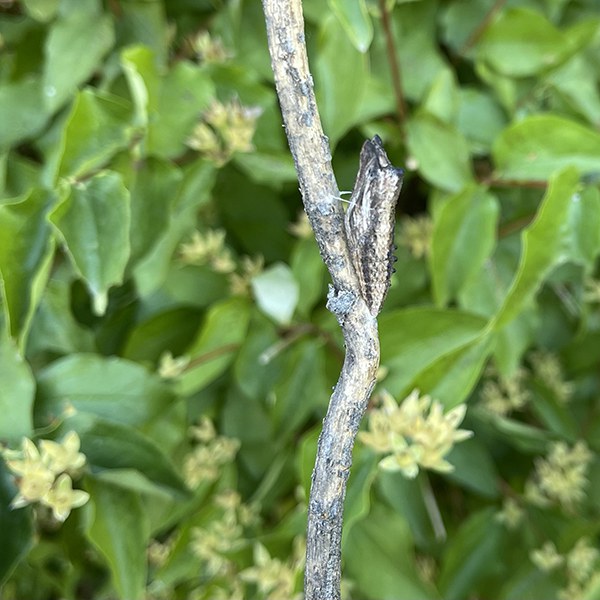It was a typical late summer day for Bend resident Donna Farquhar. A few days before, she picked up groceries and visited her friend’s garden. The sun was out and there wasn’t a cloud in the sky. Donna went into her apartment’s kitchen to prepare a meal, and that’s when she spotted them. Caterpillars! The Italian parsley she’d set out on the counter in a glass of water had crawling caterpillars!
“It was on the parsley, I couldn’t believe it,” said Donna. “That’s when I called the Land Trust.”
Now calling the Land Trust might not be the typical response of most people, particularly the more squeamish. Donna, however, had been a master gardener when she lived in eastern Oregon. She immediately recognized the importance of these tiny creatures. Grabbing a general book about butterflies from her bookshelf, Donna identified the caterpillars potentially as anise swallowtails. That’s when she decided to call the Land Trust.
Stewardship director Amanda Egertson, the Land Trust’s butterfly whisperer in residence, got the call and swung into action. After responsibly rearing monarch butterflies in the past, Amanda had all the equipment to help these caterpillars. She arrived at Donna’s apartment with a butterfly flight cage, chatted with Donna, and provided some recommendations.

Now the anise swallowtail chrysalis waits. It waits for winter to arrive and pass by. It waits for the first buds on the trees to emerge. Then in late spring or early summer, it will (hopefully) emerge as a beautiful butterfly. It will pollinate columbine, lupine, penstemon, and other flowers. If it’s a female, it will lay its eggs on parsley, dill, and the tops of carrots. And the cycle will begin anew.
“Butterflies are creatures that are so fragile, and they have to struggle so much,” said Donna. “If they didn’t struggle, though, they would just be an insect on the ground. They wouldn’t be able to blossom and become butterflies and fly away. They are remarkable.”
We look forward to the coming year when we can see if the anise swallowtail chrysalis continues its beautiful struggle towards becoming a butterfly. We’ll keep you posted!
June 2024 Update! We are excited to report that after a long winter, the anise swallowtail emerged from its chrysalis in early June! It has been released in Bend to continue its life journey.
Learn more:
- About the host plant for Monarch butterflies—The Magic of Milkweed
- Central Oregon Butterflies
- Little Butterfly Attracts Big Interest


